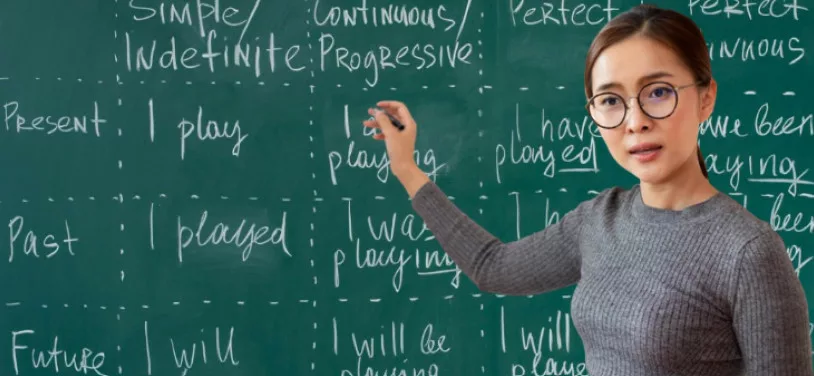My Best 8 Digital Tools for Teaching English Online.
Teaching English online can be fun and rewarding, but it also requires some planning and preparation. You need to have the right tools to communicate with your students, create engaging materials, and provide feedback.
In this blog post, I will share with you some of the best digital tools for teaching English online that I have used and personally recommend.
There are free options for all of these tools which fits perfectly within my budget but does not provide me with any revenue.
If you see anything on your travels around my website that you think is cool, I would appreciate it if you purchase via me as so far I have kept this site ad free and would like to continue doing that.
Google Meet.
Google Meet is a video conferencing platform that allows you to host live classes with your students. You can share your screen, use captions, chat, and record your sessions. You can also create breakout rooms for group activities and use polls and quizzes to check understanding. Google Meet is free for anyone with a Google account and works on any device.
Most people I know use Skype, but I have always found this to be easier and the free period during covid was 30 minutes longer than Skype. The quality is exceptional and I never had any complaints from my students. I still continue to use Google Meet for my personal life as well as my business and can not fault the service.
Google Docs.
Google Docs is a word processor that lets you create and edit documents online. You can collaborate with your students in real-time, leave comments, and track changes. You can also use Google Docs to create assignments, quizzes, and feedback forms. Google Docs is part of Google Workspace, which also includes other tools like Google Slides, Google Sheets, and Google Forms.
I run Google Docs from my smartphone (As well as my laptop) and tie it into the books and lessons I am teaching on the day. With most of the tools being Google I find I have little to no problems. It is a no-brainer to use the whole set of Google tools to provide the best experience for your students and to make it easy for yourself.
Yes, there is a bit of learning to do to make sure everything runs seamlessly. But once you have done it a few times you will look like a master and your lessons will run as smoothly as silk.
Google Workspace.
Google Workspace is a suite of cloud-based applications that helps you manage your online teaching business. You can use Gmail to communicate with your students, Google Calendar to schedule your classes, Google Drive to store and share your files, and Google Classroom to organize your courses and assignments. Google Workspace is free for educators and students with a school email address.
Google Jamboard
Google Jamboard is a digital whiteboard that allows you to create interactive lessons with your students. You can draw, write, and add images, stickers, shapes, and text boxes. You can also import slides from Google Slides or PDF files. You can invite your students to join your jam session and collaborate with you on the same board. Google Jamboard is free for anyone with a Google account and works on any device.
Canva.
Canva is a graphic design tool that helps you create beautiful and professional-looking materials for your online classes. You can use Canva to design slides, posters, flyers, worksheets, certificates, logos, and more. You can choose from thousands of templates or create your own from scratch. You can also access millions of images, icons, fonts, and colors. Canva is free for basic features and offers a premium plan for more advanced options.
I use this for so many things, from designing class brochures to templates for advertising on social media. How can this still be free and offer so much? I am embarrassed to the degree I feel like I must upgrade to a paid membership.
There is also a special education offer for teachers and schools. Canva Education…

ChatGPT
ChatGPT is a chatbot that uses artificial intelligence to generate natural and engaging conversations in English. You can use ChatGPT to practice speaking and listening skills with your students or to provide them with extra practice outside of class. You can also customize ChatGPT to suit different levels, topics, and interests. ChatGPT is free for anyone to use and works on any device.
A,I is going to change so much of how things will be done, there is a steep learning curve in front of us all. My other website, which is called AITechWarriors will be helping people stay on top of what is happening in the field of A.I.
Speechnotes
Speechnotes is a speech-to-text tool that converts your voice into text. You can use Speechnotes to dictate your notes, essays, emails, or blog posts. You can also use Speechnotes to transcribe audio or video recordings of your classes or interviews. Speechnotes is fast, accurate, and easy to use. Speechnotes is free for anyone to use and works on any device.

This is a great tool as you can use it to test your students’ pronunciation and vocabulary skills as well as provide obvious benefits for the teacher.
Grammarly
Grammarly is a writing assistant that helps you improve your grammar, spelling, punctuation, vocabulary, and style. You can use Grammarly to check your writing for errors and suggestions on how to fix them. You can also use Grammarly to set goals for your writing based on your audience, tone, and purpose. Grammarly is free for basic features and offers a premium plan for more advanced options.

The basic version is so good I have never felt the need to upgrade. I am 100% happy with the format and what I can do with it. They have recently added an AI interface which I am playing with and it gives you 100 free “prompts” per month. Along with chatGPT and the other A.I tools, I doubt I will ever get to use the lot.
Quillbot
Quillbot is a paraphrasing tool that helps you rewrite any text in different ways. You can use Quillbot to avoid plagiarism, simplify complex sentences, or generate new ideas for your writing. You can also use Quillbot to change the tone or mood of your text based on different modes like formal, informal, creative, or humorous. Quillbot is free for up to 700 characters per paraphrase and offers a premium plan for unlimited paraphrasing.

This extension is permanently open on my browser and that shows you how often I use it. Being able to paraphrase something quickly is vital for my business, thus the reason I stare at it every day.
Final Thoughts.
These are my 8 favorite online tools for teaching English. There are many ways you can use them and, as is said, you are only limited by your imagination.
For example with “speechnotes” you could use it not just for translating from speech to text but you could use it for testing the vocabulary and pronunciation of your students. How well are they pronouncing that word? Are they stringing sentences together grammatically correctly?
With chatGPT, you can get your students to phrase questions about their favorite topics and see if the answer corresponds with what they thought.
So fire up the thinking cap and use the tools that we have on hand to make our classrooms a lot more fun. And if the above aren’t enough tools for you, here are a few more that I have reviewed and used in the past, and for most still do. Look at my post named “On-Line Teachers Tools to Make Life Easier”. It just rolls off the tongue, doesn’t it?
Steve.
Some links on this site may be affiliate links, and if you purchase something through these links, I will make a commission on them. There will be no extra cost to you and, you could actually save money. Read our full affiliate disclosure here.



